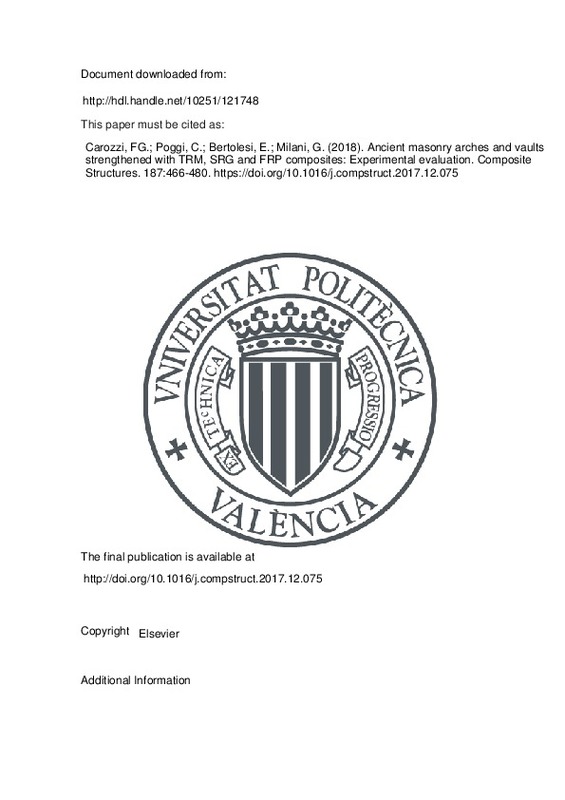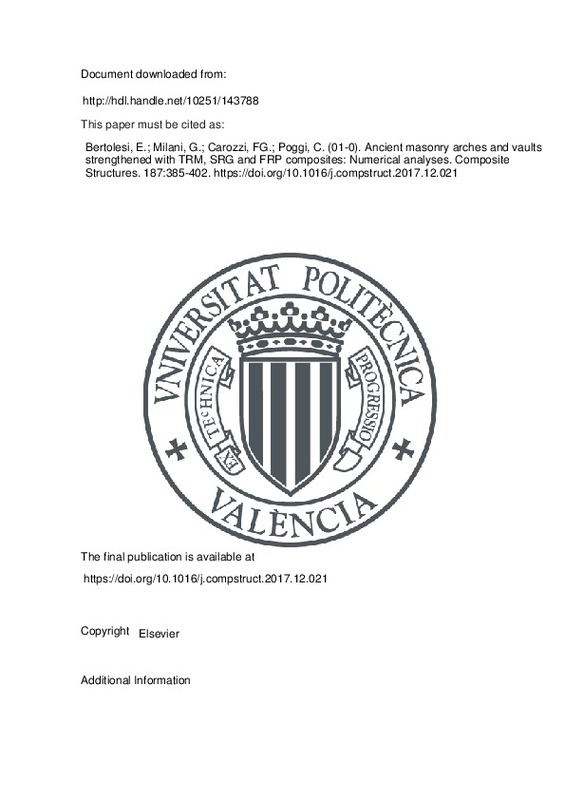JavaScript is disabled for your browser. Some features of this site may not work without it.
Buscar en RiuNet
Listar
Mi cuenta
Estadísticas
Ayuda RiuNet
Admin. UPV
The Influence of Flexural Reinforcement Yielding on the Shear Strength of Reinforced Concrete Beams with and without Shear Reinforcement
Mostrar el registro sencillo del ítem
Ficheros en el ítem
| dc.contributor.author | López, Andrea Montserrat
|
es_ES |
| dc.contributor.author | Miguel Sosa, Pedro Francisco
|
es_ES |
| dc.date.accessioned | 2024-06-18T18:03:12Z | |
| dc.date.available | 2024-06-18T18:03:12Z | |
| dc.date.issued | 2024-02-22 | es_ES |
| dc.identifier.issn | 0439-5689 | es_ES |
| dc.identifier.uri | http://hdl.handle.net/10251/205255 | |
| dc.description.abstract | [EN] Statically indeterminate structures such as continuous beams allow redistribution of internal forces. For increasing loads after yielding of the flexural reinforcement, shear forces and flexural deformations may increase, making it possible to reach shear failures even after the full flexural capacity of the structure is developed. An extensive experimental programme consisting of 30 shear tests (15 cantilever tests and 15 continuous beam tests) was carried out to assess the shear strength of reinforced concrete beams with and without shear reinforcement. Some of the tests were designed to fail in shear after yielding of the flexural reinforcement. The main objective of this experimental study was analysing the influence of large flexural strains on shear strength. The tests were instrumented by means of surface measurements using Digital Image Correlation (DIC). These measurements allowed controlling the evolution of strains at concrete surface to obtain the rotation of the plastic hinges and tracking the development and kinematics of the critical shear crack to obtain, by accounting for suitable constitutive models, the contribution of the various shear-transfer actions. The analysis of the test results confirmed the reduction of shear strength provided by concrete with increasing flexural rotation both in tests with and without shear reinforcement. Moreover, this shear strength component weakened for increasing shear reinforcement ratios. The test results were compared with the shear strength values predicted by different design codes, showing that these formulations did not properly capture the loss of shear strength caused by plastic deformation. The proposed simplified method to calculate the shear strength of the plastic hinges accounting for the plastic rotation demand shows consistent agreement for the experimental results. | es_ES |
| dc.description.abstract | [ES] Las estructuras hiperestáticas, tales como las vigas continuas, permiten la redistribución de esfuerzos internos, de forma que, tras la plastificación de la armadura de flexión, el esfuerzo cortante y la deformación pueden aumentar con el incremento de las cargas aplicadas, siendo posible alcanzar roturas por cortante incluso después de agotar la capacidad resistente por flexión de la estructura. En este artículo se presenta un extenso programa experimental constituido por 30 ensayos de cortante (15 ensayos de voladizo y 15 ensayos de vigas continuas) llevado a cabo para evaluar la resistencia a cortante de vigas de hormigón armado con y sin armadura de cortante, algunas de ellas diseñadas para fallar a cortante tras la plastificación de la armadura de flexión. El principal objetivo de este estudio experimental era analizar la influencia del desarrollo de grandes deformaciones de flexión en la resistencia a cortante. Durante los ensayos, se empleó la Correlación Digital de Imágenes (DIC) para obtener medidas de deformación superficiales. Estas medidas permitieron analizar la evolución de las deformaciones en la superficie de hormigón para obtener la rotación de las rótulas plásticas y hacer un seguimiento del desarrollo y la cinemática de la fisura crítica de cortante con el objetivo de obtener, considerando los modelos constitutivos adecuados, la contribución a la resistencia de los distintos mecanismos de transferencia de cortante. El análisis de los resultados confirmó la reducción de la componente de la resistencia a cortante proporcionada por el hormigón con el aumento de la rotación de flexión, tanto en los especímenes con armadura de cortante como sin ella. Además, esta componente de la resistencia a cortante resultó menor cuanto mayor era cuantía de armadura de cortante. Los resultados se compararon con los valores de resistencia propuestos por distintos códigos de diseño, mostrando que estas formulaciones no capturan adecuadamente la reducción de resistencia a cortante causada por la deformación plástica. El método simplificado que se propone para el cálculo de la resistencia a cortante de las rótulas plásticas considerando la demanda de rotación plástica predice resultados coherentes respecto a los obtenidos experimentalmente. | es_ES |
| dc.description.sponsorship | This research was funded with grants from the Ministerio de Economia y Competitividad (Spain) with Research Project BIA2015-64672-C4-4-R. Andrea Monserrat was particularly supported by the Conselleria d'Educacio, Investigacio, Cultura i Esport of the Generalitat Valenciana (Order 6/2015, DOCV no. 7615 15.09.2015) funded with European Regional Development Funds (ERDF) as a predoctoral researcher and by the Ministerio de Universidades (Spain) with the Recovery, Transformation and Resilience Plan (RD 289/2021 and order UNI/551/2021) funded by NextGenerationEU as a postdoctoral researcher. | es_ES |
| dc.language | Inglés | es_ES |
| dc.publisher | Elsevier | es_ES |
| dc.relation.ispartof | Hormigón y Acero | es_ES |
| dc.rights | Reconocimiento - No comercial - Sin obra derivada (by-nc-nd) | es_ES |
| dc.subject | Shear strength | es_ES |
| dc.subject | Reinforced concrete | es_ES |
| dc.subject | Shear reinforcement | es_ES |
| dc.subject | Continuous beam | es_ES |
| dc.subject | Flexural rotation | es_ES |
| dc.subject | Digital image correlation | es_ES |
| dc.subject | Resistencia a cortante | es_ES |
| dc.subject | Hormigón armado | es_ES |
| dc.subject | Armadura de cortante | es_ES |
| dc.subject | Viga continua | es_ES |
| dc.subject | Rotación de flexión | es_ES |
| dc.subject | Correlación digital de imágenes | es_ES |
| dc.title | The Influence of Flexural Reinforcement Yielding on the Shear Strength of Reinforced Concrete Beams with and without Shear Reinforcement | es_ES |
| dc.type | Artículo | es_ES |
| dc.identifier.doi | 10.33586/hya.2022.3087 | es_ES |
| dc.relation.projectID | info:eu-repo/grantAgreement/MINECO//BIA2015-64672-C4-4-R/ES/EVALUACION EXPERIMENTAL DE VIGAS CONTINUAS PRETENSADAS, CON Y SIN REFUERZO, Y PIEZAS COMPUESTAS DE DOS HORMIGONES, PARA LA EXTENSION DE SU VIDA UTIL/ | es_ES |
| dc.relation.projectID | info:eu-repo/grantAgreement/GVA//7615/ | es_ES |
| dc.relation.projectID | info:eu-repo/grantAgreement/MIU//UNI%2F551%2F2021//Subvenciones a universidades públicas para la recualificación del sistema universitario español/ | es_ES |
| dc.rights.accessRights | Abierto | es_ES |
| dc.description.bibliographicCitation | López, AM.; Miguel Sosa, PF. (2024). The Influence of Flexural Reinforcement Yielding on the Shear Strength of Reinforced Concrete Beams with and without Shear Reinforcement. Hormigón y Acero. 75(302):91-108. https://doi.org/10.33586/hya.2022.3087 | es_ES |
| dc.description.accrualMethod | S | es_ES |
| dc.relation.publisherversion | https://doi.org/10.33586/hya.2022.3087 | es_ES |
| dc.description.upvformatpinicio | 91 | es_ES |
| dc.description.upvformatpfin | 108 | es_ES |
| dc.type.version | info:eu-repo/semantics/publishedVersion | es_ES |
| dc.description.volume | 75 | es_ES |
| dc.description.issue | 302 | es_ES |
| dc.relation.pasarela | S\520314 | es_ES |
| dc.contributor.funder | Generalitat Valenciana | es_ES |
| dc.contributor.funder | Ministerio de Universidades | es_ES |
| dc.contributor.funder | European Regional Development Fund | es_ES |
| dc.contributor.funder | Ministerio de Economía y Competitividad | es_ES |











